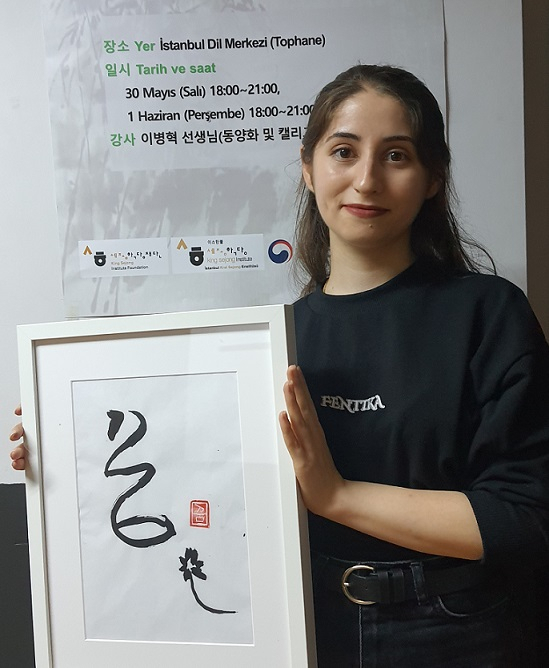
Whenever feeling down in her studies, Gulperi Kucukkaraca would wield her pen and craft her favorite Korean word in cursive on a white sheet of paper: 꿈.
The small ritual served as a guiding light, helping her keep motivated in her dream of becoming a Korean expert in the not-so-distant future. The Korean word, which is pronounced "kkeum," means "dream" or "life goal."
"I have always been interested in Far East politics and international relations,” said the 25-year-old graduate of Istanbul Gelisim University in a recent interview with The Korea Herald. “My dream is to become a distinguished professor at a university in Korea."
When the King Sejong Institute in Istanbul, a Korean government-backed language center, organized a Korean calligraphy class in May, she was quick to apply. Through the class, she could refine her calligraphic skills and bring greater depth and beauty to her beloved Korean word.
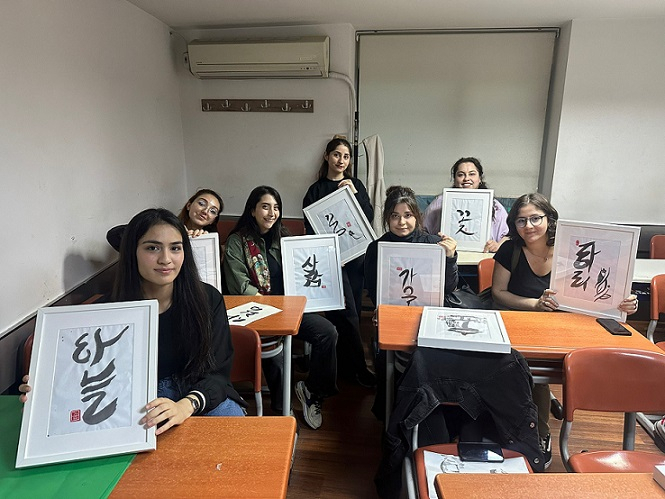
The class had 20 Turkish participants, including Kucukkaraca.
Immersed in the world of strokes and curves, participants practiced writing 꽃 ("kkot," meaning "flower"), 하늘 ("haneul," meaning "sky") and other Korean words of their choice with ink and brush on traditional Korean mulberry paper, known as hanji.
For some learners of the Korean language, Hangeul calligraphy is rising as a fun and artistic way to complement their studies.
“I started to study Korean because I loved their round and square shapes. The Korean word 꽃 looks like a girl dancing to music, which reminds me of Blackpink's Jisoo who released her solo debut single, ‘Flower,’” said 23-year-old university student Ana Leslie in London, who took a Korean calligraphy class last year organized by the Korean Education Center in the UK.
“Writing letters of a word in an artistic way while thinking about the word’s meaning made it easy for me to memorize the word,” she added.
Kucukkaraca said calligraphy was a chance for her to unlock new dimensions of self-expression and creativity along the journey of Korean language learning.
"I was impressed by how calligraphers make art out of four materials called ‘mungbangsawoo,' which are paper, brush, ink stick and ink stone,” she added.
Some experts say the “visual appeal” of the Korean script keeps people overseas interested in the Korean language.
Kim Jin-kyung, a 13-year veteran Korean calligrapher who has taught international students at several local universities, said, “Many students were intrigued by visually appealing designs of Korean calligraphy, which make Hangeul letters that are stacked into little blocks for each syllable unlike English, look much softer.”
“Creating their own unique lettering design that shows one’s artistic creativity, they became more familiar with the Korean alphabet," Kim said.
Calligraphy not only introduces the beauty of Hangeul to foreign nationals, but also helps some overseas Koreans restore their links to their home country, according to Kim Yang-hun, a calligrapher in her 50s living in Sydney.
“Many children who were born in Korea but grew up here (in Australia) can speak Korean, but they are not good at writing their native language. By writing Hangeul letters one by one and understanding a word’s meaning, they can feel more confident about their native tongue and get to know the emotions of Koreans reflected in the language, which helps them communicate better with their Korean family members,” she said.
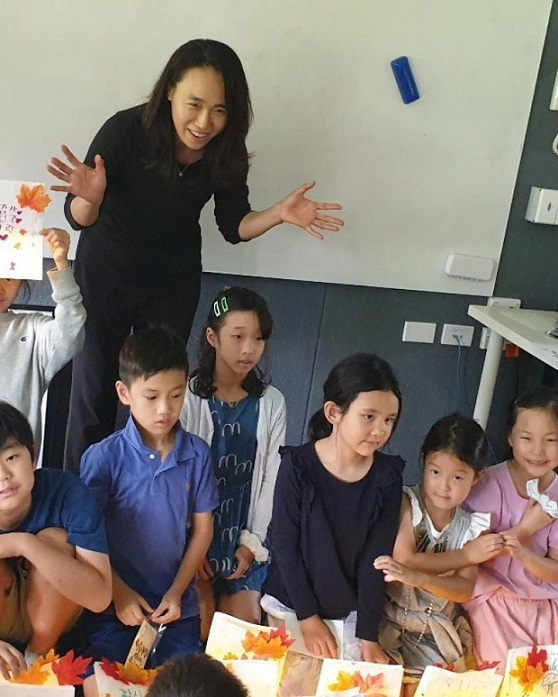
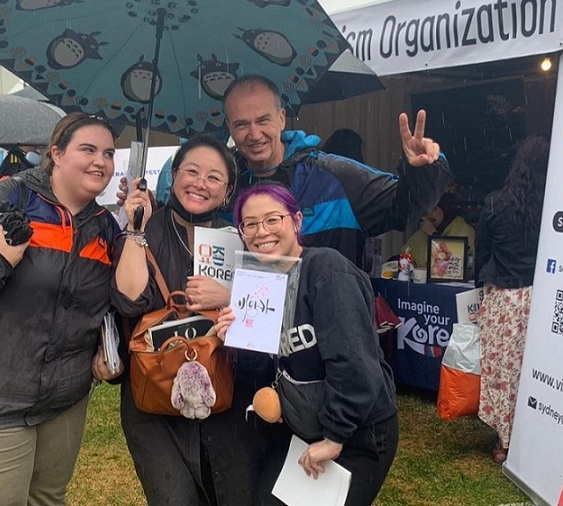
Kim noted the rapid rise of K-pop and Korean cultural content in recent years has aroused global interest in the Korean language and calligraphy.
“Some students were eager to learn how to write the names of their favorite K-pop idols like Blackpink and EXO in calligraphy as a way of expressing their fan loyalty. It was so touching to see some of them become teary-eyed when looking at their calligraphy art pieces featuring their stars’ Korean names,” she said.
“Honestly, I had never really thought about the beauty of Hangeul before. Whenever I hear my foreign students say that Hangeul is beautiful, my heart is filled with a sense of pride in my home country’s cultural heritage," Kim said.
In Brazil, there have been noticeable increases in the number of foreigners taking Korean calligraphy courses at government agencies like the Korean Cultural Center under the Embassy of South Korea in Brazil, according to Kim Eun-ae, a 30-year-old Korean calligrapher living in Sao Paulo who has taught Korean calligraphy to Brazilians since 2019.
"Thanks to the boom of Hallyu, more Brazilians are studying Korean and showing interest in Korean calligraphy," she said.
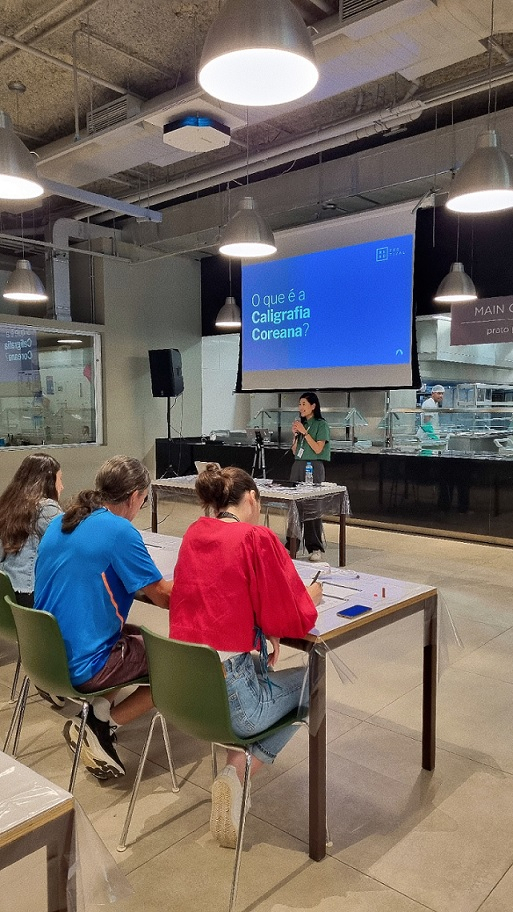
To promote the beauty of Korean calligraphy, Kim posts pictures and short videos introducing Korean characters written in cursive along with other cultures like Korean food or traditional clothing on Instagram.
"Many of my students enjoy writing Korean words and expressions they heard a lot in Korean dramas like '사랑해,' which means 'I love you' in English."
Targeting Hallyu fans, her class is focused on analyzing various titles of Korean dramas through calligraphy.
"Students learn to identify letters properly and understand why they were drawn in a certain way, feeling different emotions while writing each word or expression."
Hangeul on the body
The Korean alphabet is also a source of artistic inspiration for some local tattooists as well.
For the 55-year-old tattooist who goes by Kim Ssdam, who has specialized in making Korean tattoo designs for more than a decade, the harmony between the lines and spaces that are delicately structured to create Hangeul letters has always been his fascination and inspiration.
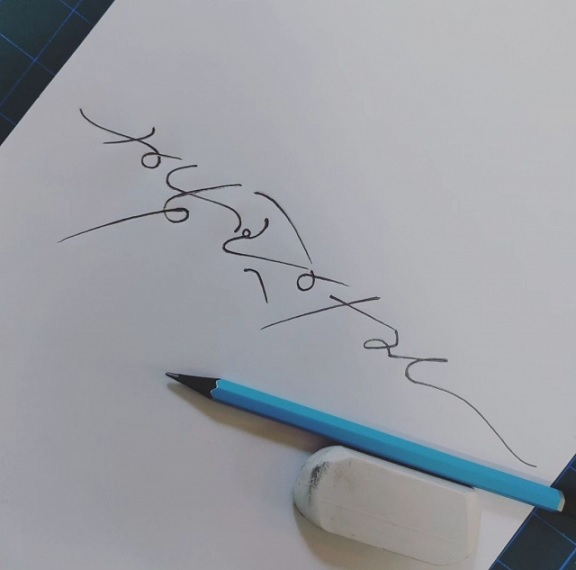
“We Koreans are not really aware of the beauty of Hangeul since we have been exposed to the writing system since very young. We take it for granted. But I have seen many foreign customers become captivated by Hangeul letters even though they had never learned them,” Kim said.
“Hangeul has turned into an attractive form of visual art among foreigners looking for special artistic experiences," he said.
Kim, who started his career as a tattooist in 1997 by drawing tattoos with English, decided to create Hangeul tattoos in 2011 when he visited an international tattoo convention held in China.
“When I saw Chinese tattoo artists introduce tattoo designs inspired by Chinese characters, I felt a strong urge to make unique tattoos designed after my nation’s writing system that foreigners cannot imitate,” he said.
Now, 10 years later, over half of his clients are people of foreign nationality wanting to have Hangeul letters tattooed on their bodies. Some of them are tourists visiting Korea primarily to get their Hangeul tattoos.
“Among the popular Hangeul tattoo designs for foreign customers is one's English name expressed in Korean calligraphy,” Kim said.
On Instagram, a search for the hashtag in English for “hangeultattoo” returns some 750 photos showing Korean words tattooed on people's bodies. The same term in Korean on Instagram returns over 25,000 results.
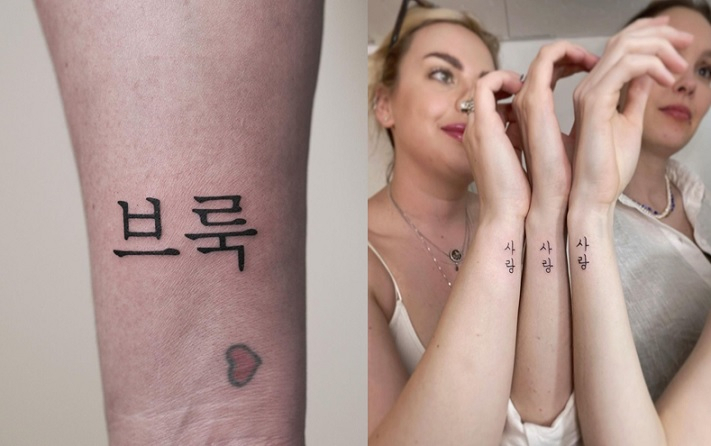
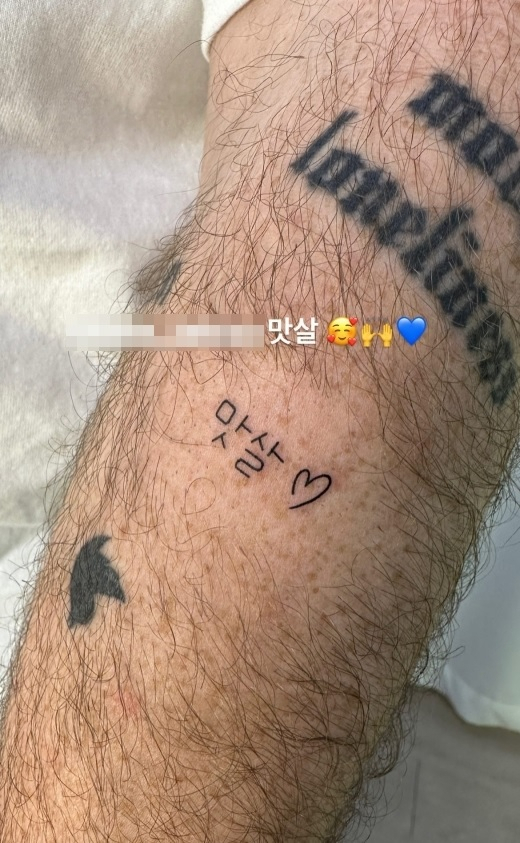
Korean-inspired tattoos have also been sought after by global music artists.
Late last year, American singer-songwriter Lauv, who is popular among Korean fans for his songs “Paris in the Rain” and “I Like Me Better,” shared a photo of his arm with a tattoo of the Korean word "matsal," which means "crab stick," and a small heart drawn next it.




![[Weekender] How DDP emerged as an icon of Seoul](http://res.heraldm.com/phpwas/restmb_idxmake.php?idx=645&simg=/content/image/2024/04/25/20240425050915_0.jpg&u=)
